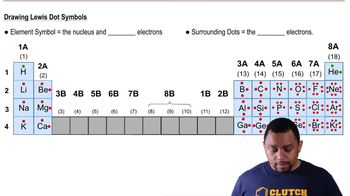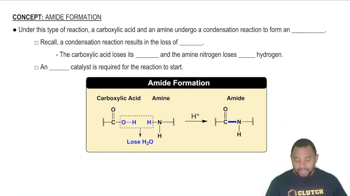Write the group number and draw the Lewis symbol for each of the following elements:
c. calcium
 Verified step by step guidance
Verified step by step guidance Verified video answer for a similar problem:
Verified video answer for a similar problem:



 0:52m
0:52mMaster Lewis Dot Symbols (Simplified) Concept 1 with a bite sized video explanation from Jules
Start learning